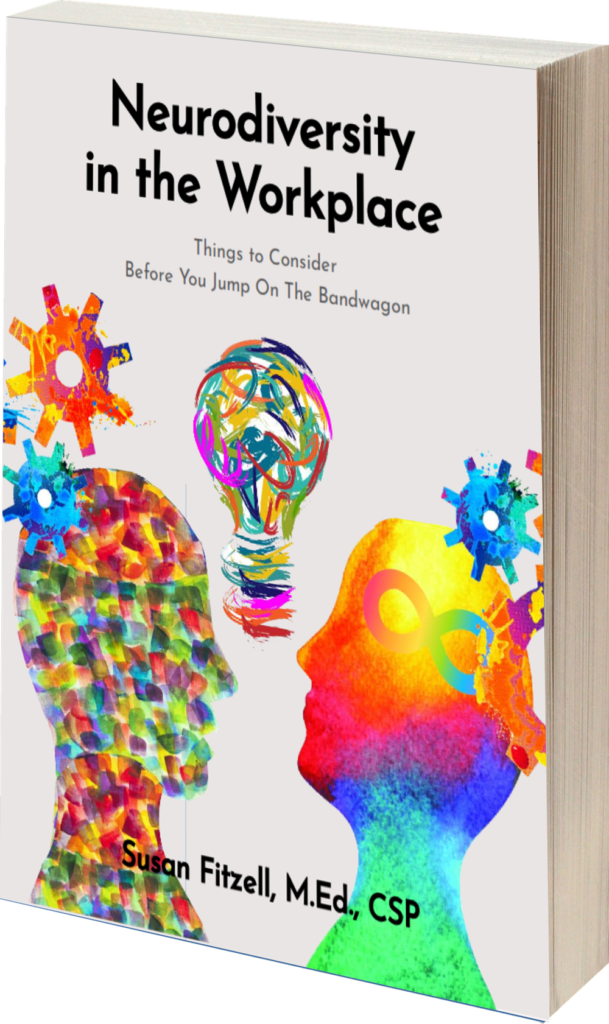Currently, unemployment for neurodivergent adults runs as high as 30 to 40 percent. Yet, at least 70 percent of employers worldwide, especially in the STEM and manufacturing fields, are having trouble filling open positions.

How do you, as an employer, help move the needle on the hiring rate for neurodivergent employees?
The key elements of successful programs can be put in place by employers of any size to help attract, hire, and keep neurodiverse talent.
- They train their managers and HR personnel to better interact and empathize with candidates.
- They provide accommodation and support for their neurodiverse employees.
- They join other companies in initiatives to improve hiring and management practices for neurodiverse candidates.
Microsoft
According to Microsoft, companies with programs focusing on inclusion and accessibility report 28 percent higher revenue and twice the net income. But neurodiverse hiring practices mean more than just boosting a company’s bottom line. They help improve support for the entire workforce, both neurodivergent and neurotypical. Neurodiverse team members help generate new ideas and new ways of doing things that make a company more resilient in a fast-changing economic world.
Internally, Microsoft created its Autism at Work program in 2015 to recruit and support employees on the autism spectrum.
In 2017, Microsoft founded the Neurodiversity At Work Employer Roundtable, a community of employers who are committed to hiring initiatives that focus on neurodiversity. The roundtable’s focus is on creating support systems that help neurodiverse individuals thrive at work and on increasing understanding and awareness of neurodiversity in the workplace. The Roundtable members include major employers like Bank of America, Chevron, Ford, Google, Salesforce, and Travelers.
In February 2022, partnering with Disability: IN, the roundtable created a Neurodiversity Career Connector that helps neurodiverse candidates connect with employers. It also has an employer-focused page to help companies create neurodiversity-focused hiring programs.
Among major employers, Google has long been noted as a trailblazer in recruiting, hiring, and retaining employees with disabilities. Its employees founded The Disability Alliance, a community that supports each other and builds awareness about disability inclusion throughout the company.
Lorne Needle, global lead for disability inclusion at Google, conceived of and launched the company’s Autism Career Program, which expanded to Google Cloud in July 2021. This program aims to hire and support talented individuals with autism to work in the growing cloud industry. The program works with experts from the Stanford Neurodiversity Project and leverages the knowledge and voices of Google’s autistic employees.
For many autistic candidates, “the interview process can pose challenges due to unconscious bias from a hiring manager or interviewer. For example, if the candidate doesn’t look an interviewer in the eyes or asks for additional time to complete a test,” said Rob Enslin, Google Cloud’s president of Global Customer Operations.
Enslin said that Google Cloud will train up to 500 of its managers (and others involved in its hiring processes) to work “effectively and empathetically” with candidates. It will also ensure its onboarding process is “accessible and equitable” to new hires. Stanford, for its part, will coach those applicants and provide ongoing support for them, their teammates, and their managers.
SAP
As one of the first large employers to implement an Autism at Work program a decade ago, SAP has been at the forefront of companies that support awareness of neurodiversity and hiring practices that are equitable for candidates.
“Hiring an employee on the autism spectrum is only the first step in the process of creating a welcoming workplace for neurodiverse employees. Managers may need to adjust some of their practices to make an employee on the spectrum feel more comfortable in their work environment. It may also mean that team members need to be more thoughtful in the ways they communicate with one another,” writes Eva Woo in a post on the Autism at Work blog.
SAP boasts a 90 percent retention rate of people with autism once they’re hired. The company provides support and mentoring for employees.
So, why focus on large employers alone? Sadly, there isn’t as much information or studies out there about small and mid-sized companies that employ supportive hiring and management for neurodiverse people. But many companies are implementing programs as they work to build equity and diversity across the board.
Leaders, if you’re not sure that a neurodiversity program is feasible for your company, I urge you to get involved with community and industry-wide initiatives, like Microsoft’s Employer Roundtable, where you can find ideas, strategies, and support.
Can you do me a favor before you go?
If you enjoyed this article, join my email list to access all of my free neurodiversity in the workplace guides, including my eBook “Neurodiversity in the Workplace; Things to consider before you jump on the bandwagon. ” (This link takes you to my website.)
Photo Credit: insta_photos /iStockphoto Standard License
Susan is a recognized authority in the learning and collaboration space. Her ‘lived experience’ as a neurodivergent, combined with her three-plus decades in the field of learning disabilities and neurodiversity, uniquely qualifies her as an expert in this field. Because she understands the struggles of someone whose brain is wired differently, she is passionate about creating a world that empowers and values neurodivergent talent.
References:
[a] Aquino, Steven (2022) Microsoft Inclusive Hiring And Accessibility Boss Neil Barnett Talks Embracing Neurodiverse Workers, New Neurodiversity Career Connector Tool, Forbes. https://www.forbes.com/sites/stevenaquino/2022/05/02/microsoft-inclusive-hiring-and-accessibility-boss-neil-barnett-talks-embracing-neurodiverse-workers-new-neurodiversity-career-connector-tool/?sh=6d286cbe3990
[b] Neurodiversity @ Work Employer Roundtable, Disability: IN https://disabilityin.org/what-we-do/committees/neurodiversity-at-work-roundtable/
[c] MSFTEnable (2022). Neurodiversity Career Connector, Youtube. https://www.youtube.com/watch?v=KIrhlfM9zVA
[d] Rob Ensling (2021). Strengthening our workplace with neurodiverse talent, Google Cloud. https://cloud.google.com/blog/topics/inside-google-cloud/google-cloud-launches-a-career-program-for-people-with-autism
[e] Stanford Neurodiversity Project, Stanford University. https://med.stanford.edu/neurodiversity.html
[f] Corrigan, John (2022). Google’s global lead for disability inclusion discusses recruiting initiatives, Human Resources Director. https://www.hcamag.com/us/specialization/diversity-inclusion/google-leader-on-inclusion-accessibility-we-can-do-more/404816
[g] Our commitment to hiring people with disabilities, Google Careers. https://careers.google.com/programs/people-with-disabilities/
Neurodiversity Definition
Neurodiversity: this term refers to a general diversity of minds. It includes people who are neurotypical and neurodivergent. When I talk about promoting neurodiversity in the workplace, for example, I am referring to creating a diverse workforce representative of the broad spectrum that exists when it comes to ways of thinking, processing information, communication, and learning. Some employees may be “normal” or neurotypical while others may have ADHD, Dyslexia, Autism, or trauma impacted ways of thinking. I am not referring to any particular label or diagnosis, but rather, the concept of an environment where a diversity of minds coexist.
Neurodiverse: This word is pretty much the same as neurodiversity, but should be used as an adjective. You can say, for example, that your workplace is neurodiverse.
Be careful though, because you should never describe a person as being neurodiverse. Individual people should be described as neurodivergent.
Neurodivergent: This word describes an individual whose way of thinking falls outside of society’s defined version of normal. Oftentimes you will see it abbreviated as ND.
Many times, neurodivergent people will have a diagnosis or label you may recognize, like autism, dyslexia, or ADHD. But neurodivergent people are also those with epilepsy, different kinds of brain trauma, or simply a unique way of thinking that may not have a specific diagnosis.
CLICK HERE to visit the articles page.
 FREE DOWNLOAD: Neurodiversity in the Workplace: Things to Consider Before You Jump On the Bandwagon
FREE DOWNLOAD: Neurodiversity in the Workplace: Things to Consider Before You Jump On the Bandwagon
Neurodiverse hiring practices can benefit any company in any industry and in more areas than most people realize. The investment has yielded greater patenting, innovation, process improvement, efficiency, and creativity not only in technology industries but also in industries that include investment banking, insurance, and mortgage banking.
This resource explains the term “neurodiversity” and describes the potential positive impact on your business that can come from including neurodivergent individuals in your workplace.
Download Neurodiversity in the Workplace! – Free!
Bring Susan Fitzell, M.Ed., CSP
Top Neurodiversity Speaker
To YOUR Organization!


